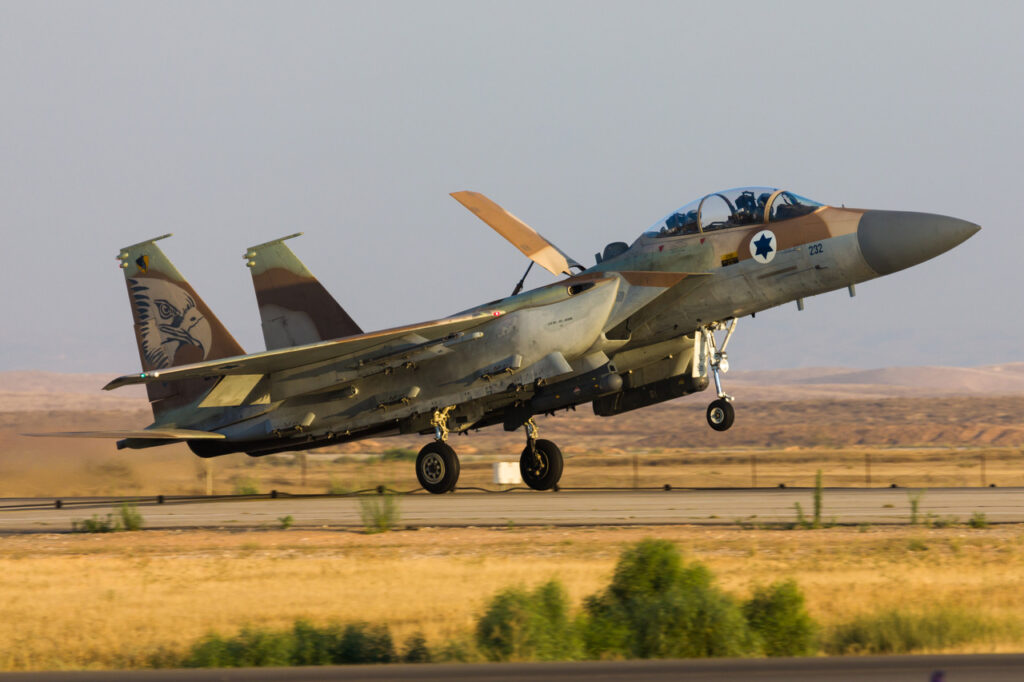
The Reason America Bought 21 MiG-29 Russian-Built Fighter Jets
What You Need to Know: The Mikoyan MiG-29 (NATO reporting name “Fulcrum”), a twin-engine air superiority fighter, entered service with the Soviet Union in 1983 to counter U.S. fighters like the F-15 and F-16. Over 1,600 MiG-29s were produced and remain in service globally, including with Russia and Ukraine in the ongoing conflict.

-The United States acquired 21 MiG-29s from Moldova in 1997 to prevent them from being sold to Iran. The U.S. used the aircraft for evaluation and dissimilar air combat training. While most of these MiG-29s were scrapped, a few remain on display at U.S. military bases.
How the U.S. Ended Up With 21 Soviet MiG-29 Fighters
Developed to counter the then-new United States fighters such as the McDonnell Douglas F-15 Eagle and the General Dynamics F-16 Fighting Falcon, the Mikoyan MiG-29 (NATO reporting name “Fulcrum”) entered service with the Soviet Air Forces in 1983.
The twin-engine fighter aircraft was developed by the Mikoyan design bureau as an air superiority fighter. More than 1,600 were produced, and the MiG-29 proved to be one of the most capable fourth-generation fighter aircraft.
Four decades later, it remains in service today; not only with Russia but with a number of former Soviet Republics.
The MiG-29 has been employed by both Russian and Ukrainian forces in the ongoing conflict.
Export models of the Fulcrum were also sold to East Germany, India, Iran, Iraq, Libya, Peru, Poland, Syria, Sudan, and Yugoslavia. However, there is a nation not expected to be on a list of “operators” of the MiG-29 – namely the United States.
MiG-29: NATO MiGs
Following the reunification of Germany, the Luftwaffe began to incorporate the MiG-29s that had been operated by the former East German Air Force. That provided United States Air Force pilots with an opportunity to come face to face with an aircraft that could have encountered had the Cold War gone another direction.
U.S. pilots were even able to experience the MiG-29 Fulcrum in aerial exercises and quickly discovered that in short-range dogfights fought at low speeds, the MiG-29 demonstrated agility that they could not match with their respective aircraft.
Assessments further found that at ranges out to 40 miles apart American aircraft enjoyed an advantage over the Fulcrum, but at ranges of 10 miles apart, that advantage was rapidly diminishing and by the time engagements closed to five miles apart the MiG-29’s superior maneuverability gave it an advantage.
The American MiG-29s
Following the dissolution of the Soviet Union in late 1991, it became clear that an emergency situation was dangerously close. Some 30,000 nuclear weapons and a vast arms production complex were spread over four sovereign states.
This led to the Nunn–Lugar Cooperative Threat Reduction (CTR) program that sought to secure and dismantle weapons of mass destruction. Ukraine, Belarus, and Kazakhstan became “nuclear weapons free” because of this program, but Congress also provided funds to the Department of Defense to help ensure that nuclear weapons or those capable of carrying nuclear armament couldn’t end up in the wrong hands.
In November 1997, the United States used CTR funds to purchase 21 nuclear-capable MiG-29 aircraft from the Republic of Moldova – which had been part of the former Soviet Union.
The United States had feared that Moldova might sell these MiG-29 aircraft to a nation seeking nuclear delivery capabilities – notably Iran.
This came about after Moldovan authorities had informed Washington that the Islamic Republic had expressed interest in the aircraft.
Iran was already an operator of the MiG-29, but the Clinton administration feared the modernized MiG-29C variants possessed by Moldova could be used for the delivery of nuclear weapons. The United States moved forward with a deal to acquire the aircraft instead and paid $40 million along with humanitarian assistance that included non-lethal defense equipment such as trucks.

The purchase also provided the tactical jet fighter communities of the United States Air Force, the United States Navy, and the United States Marine Corps with a working evaluation and data for the MiG-29, and possibly for use in dissimilar air combat training.
In late 1997, the 21 MiGs – including 14 MiG-29Cs – were delivered to the National Air and Space Intelligence Center (NASIC) at Wright-Patterson Air Force Base in Ohio. Exactly how the MiG-29s were used isn’t as clear.
Some may have been tested, but in the end, most were probably scrapped. However, at least a handful can now be displayed at Nellis Air Force Base (AFB), Nevada; Naval Air Station (NAS) Fallon, Nevada; Goodfellow AFB, Texas; and at Wright-Patterson AFB, Ohio.
Author Experience and Expertise
Peter Suciu is a Michigan-based writer. He has contributed to more than four dozen magazines, newspapers, and websites with over 3,200 published pieces over a twenty-year career in journalism. He regularly writes about military hardware, firearms history, cybersecurity, politics, and international affairs. Peter is also a Contributing Writer for Forbes and Clearance Jobs. You can follow him on Twitter: @PeterSuciu.
All Images are Creative Commons and Shutterstock.


